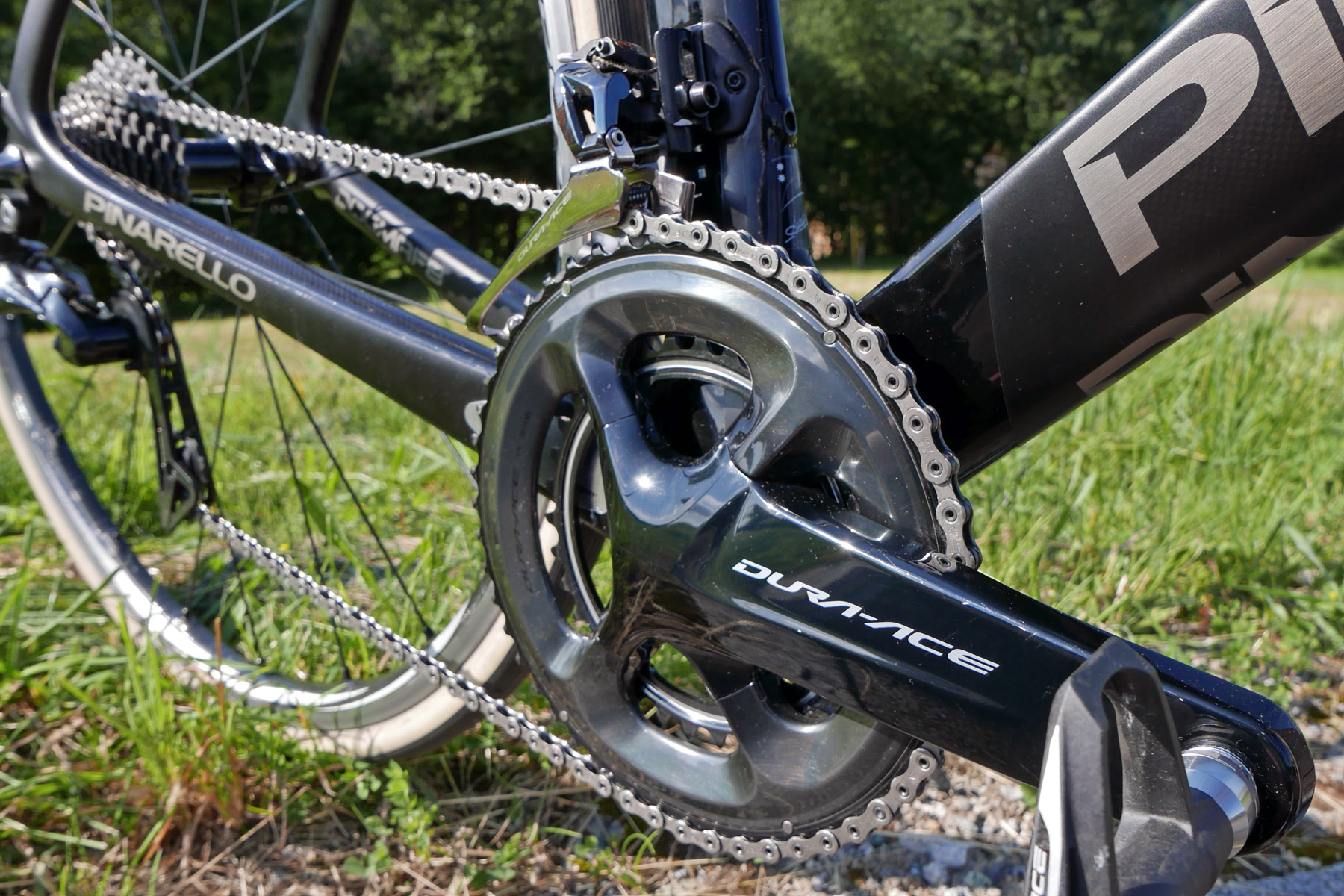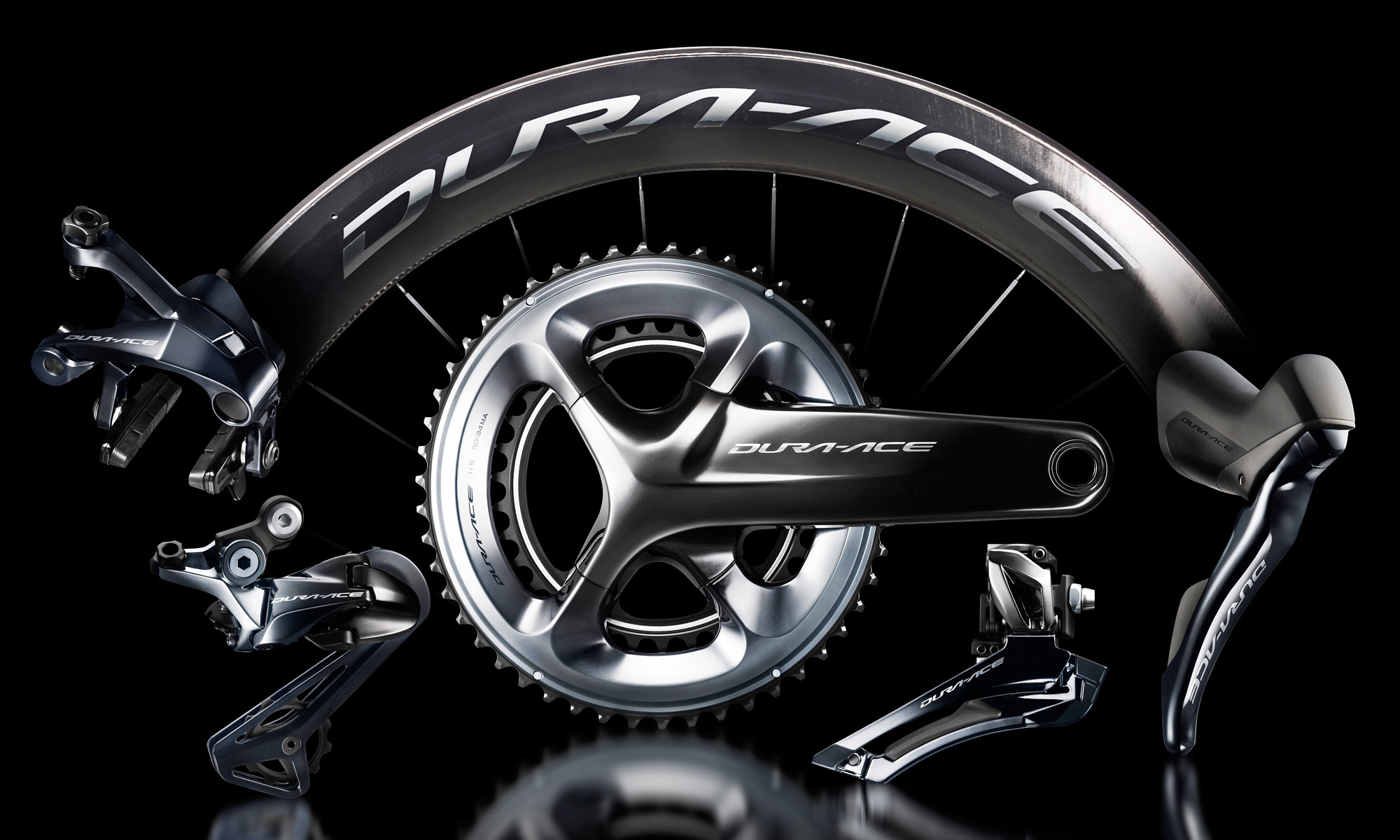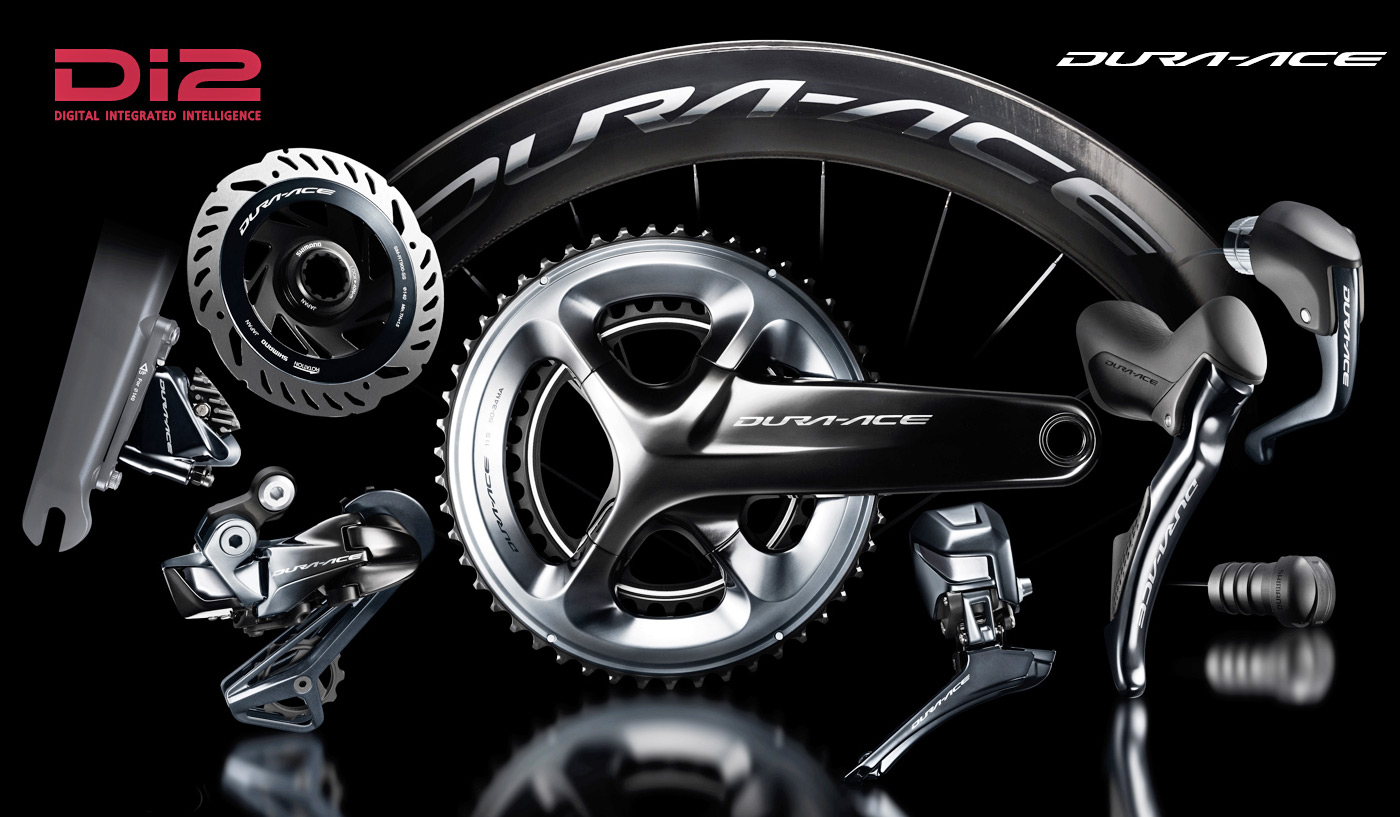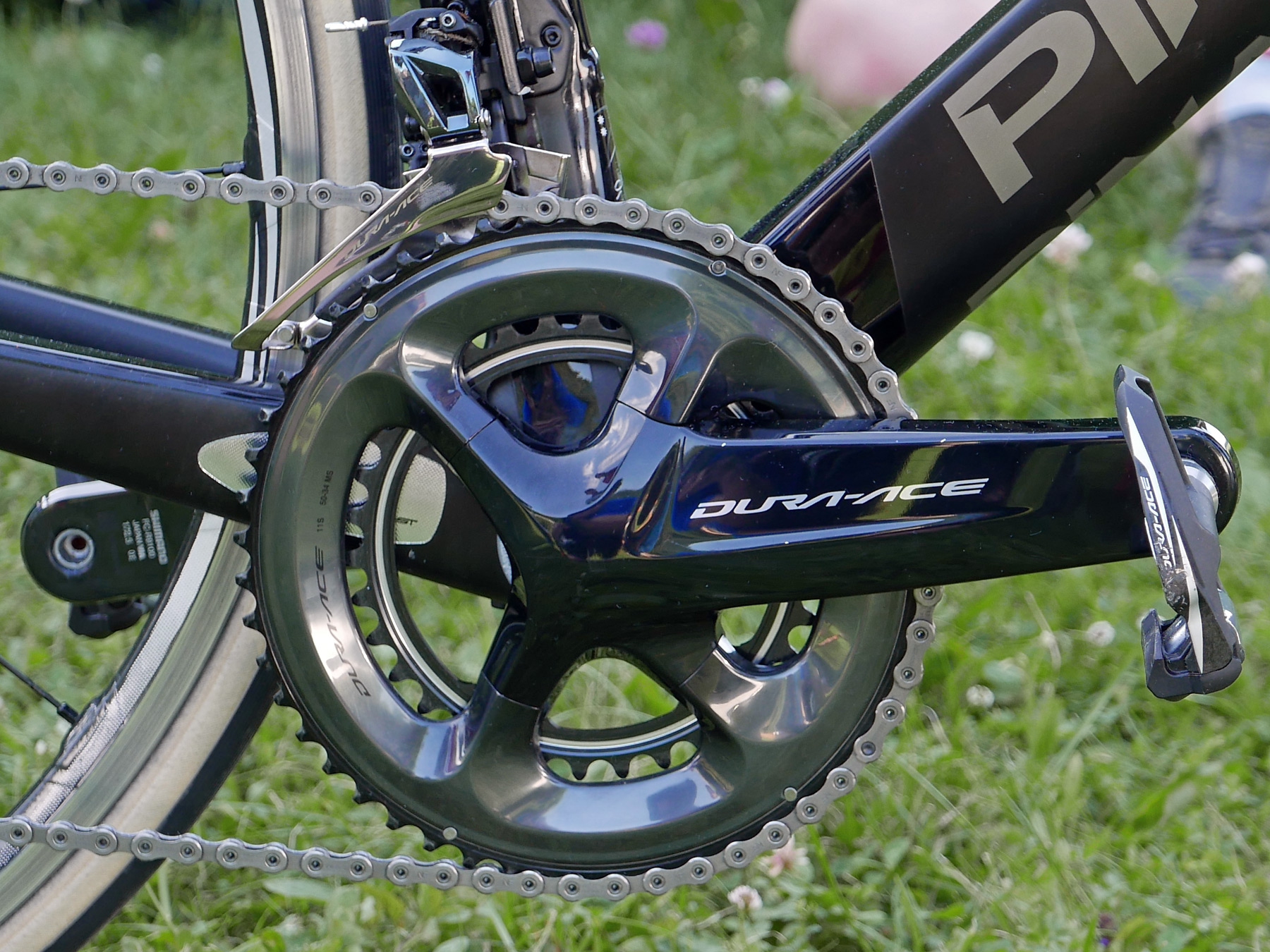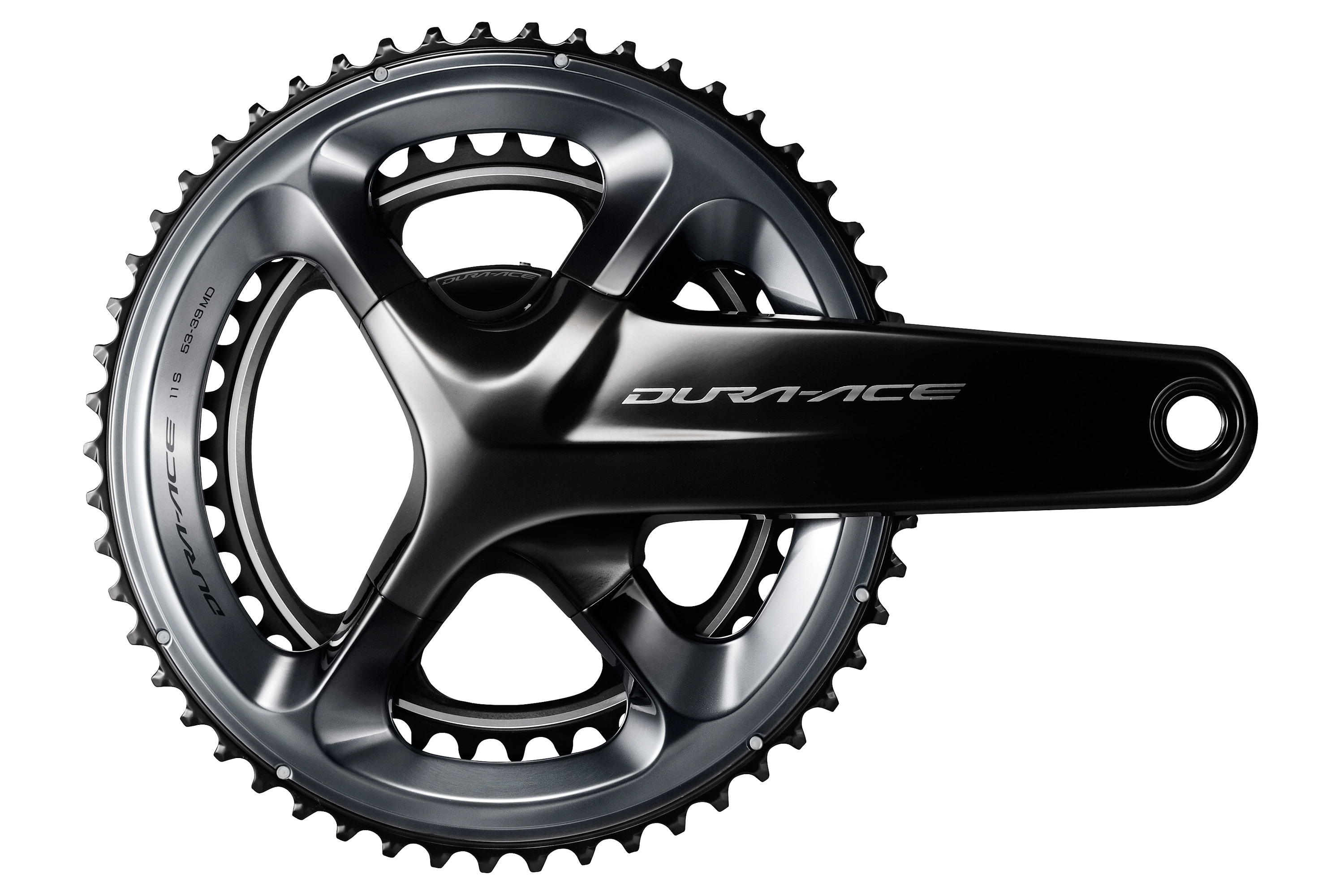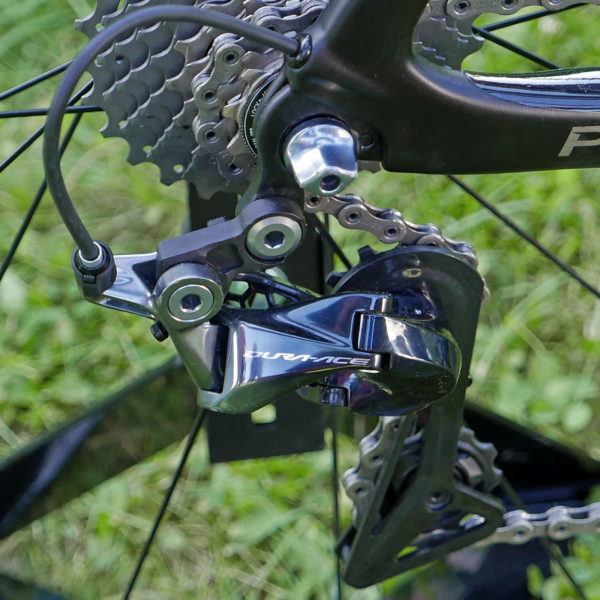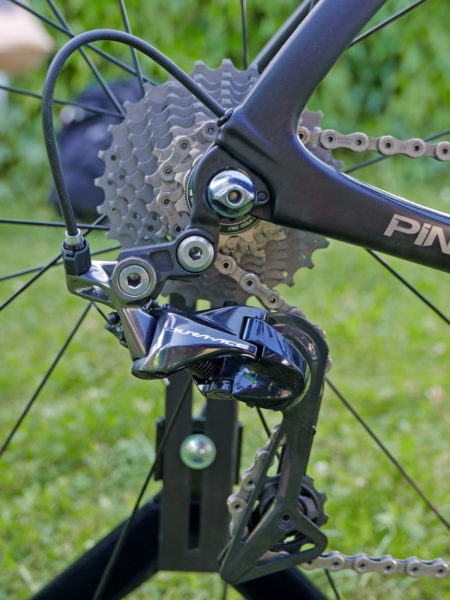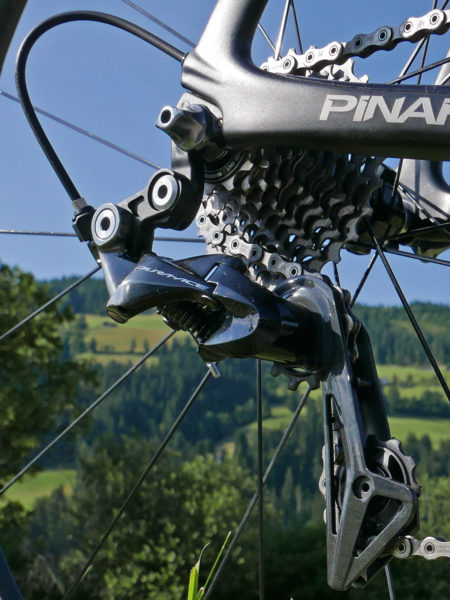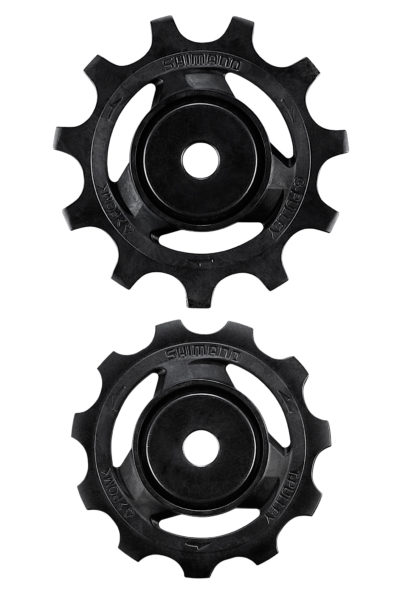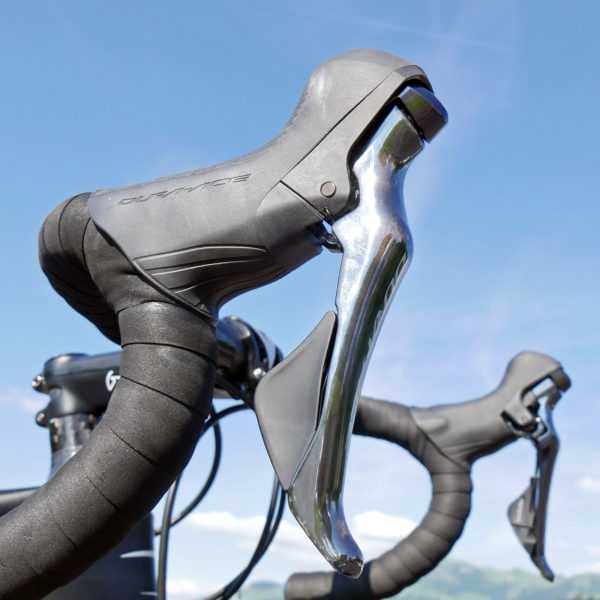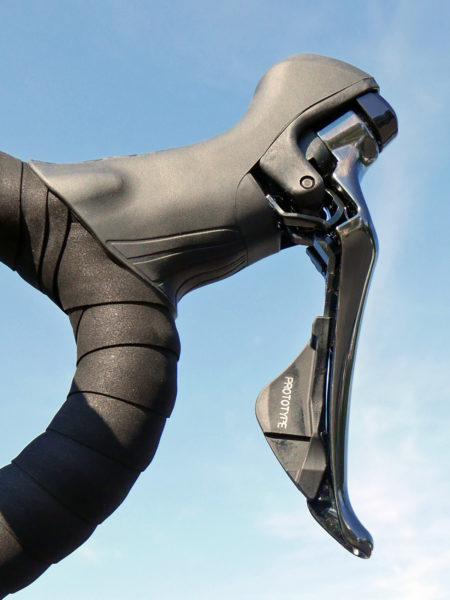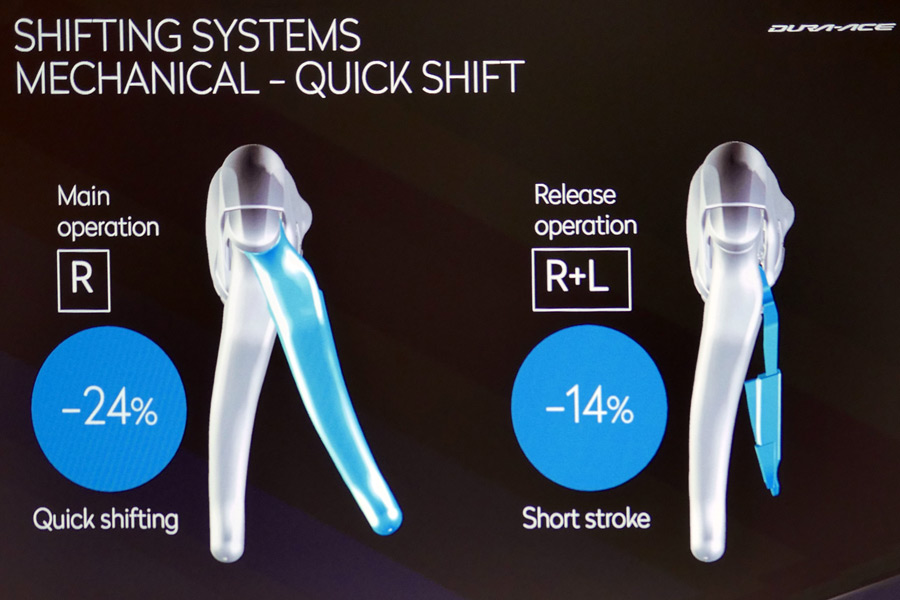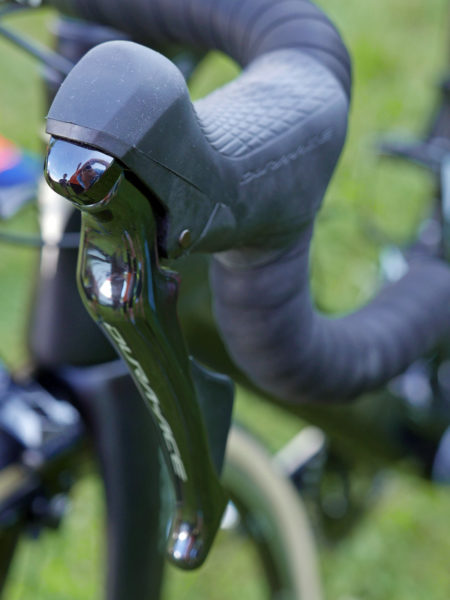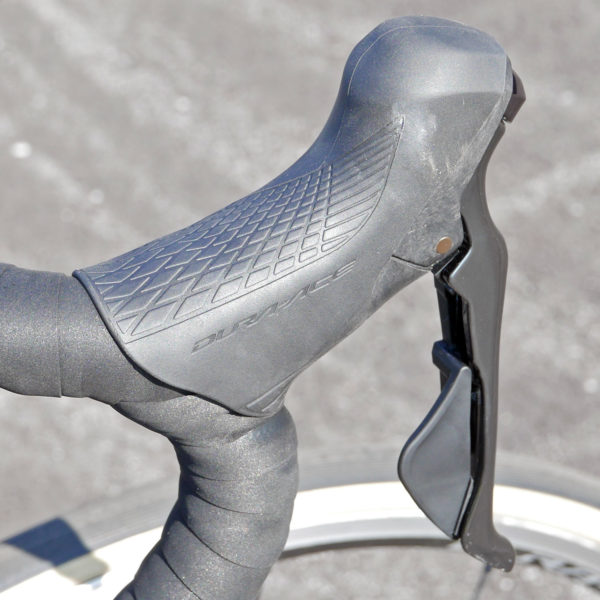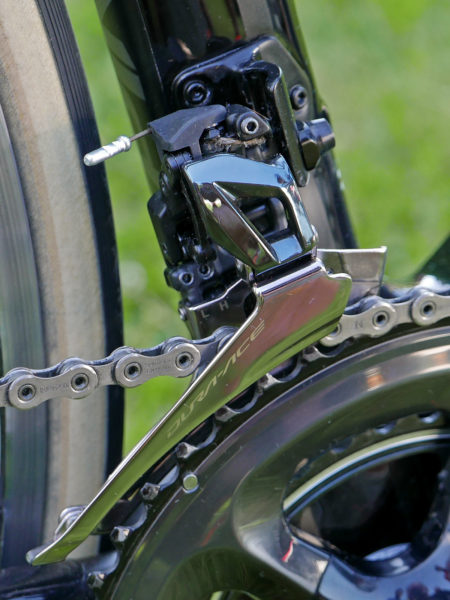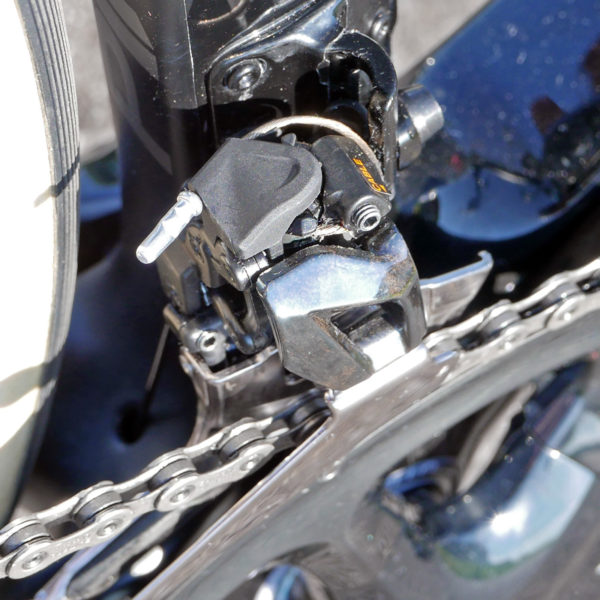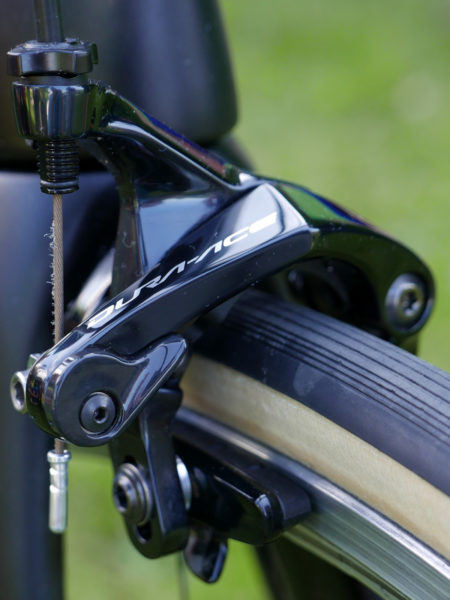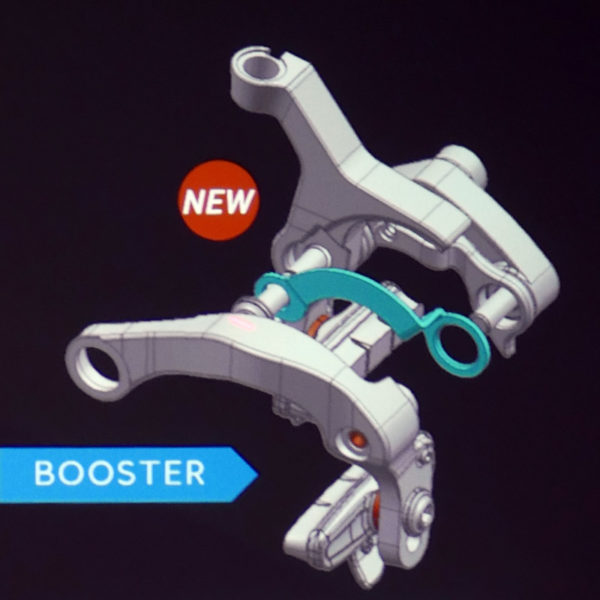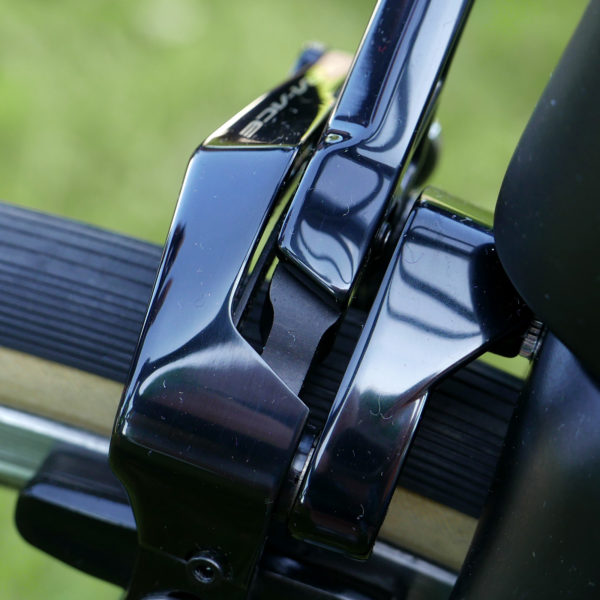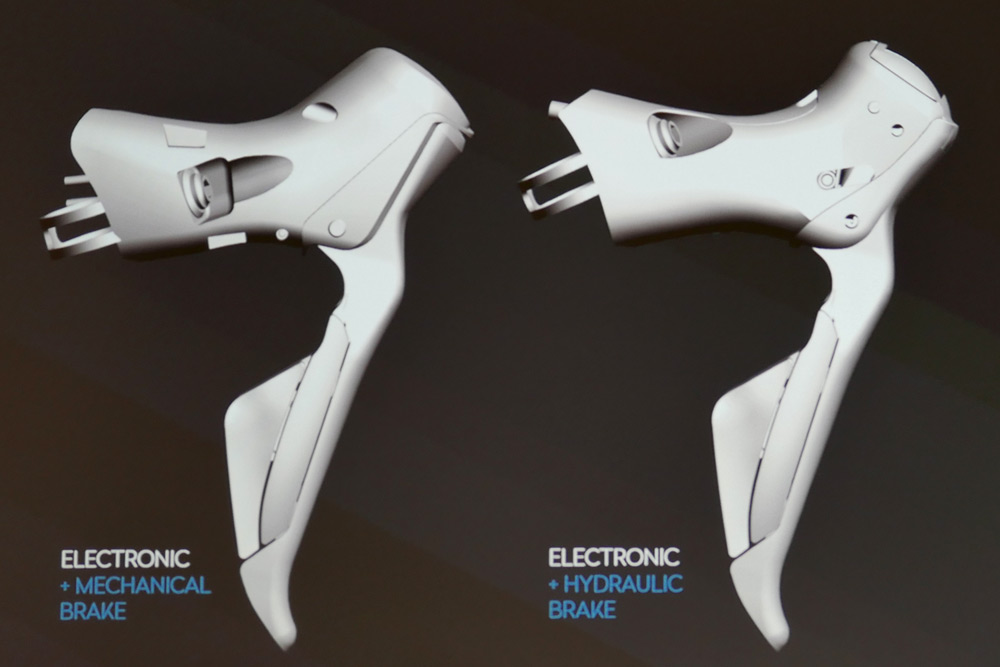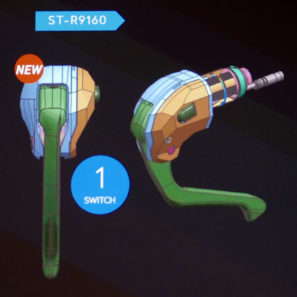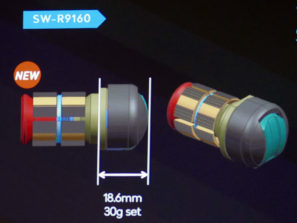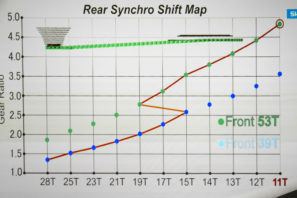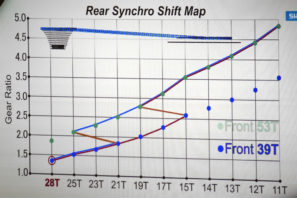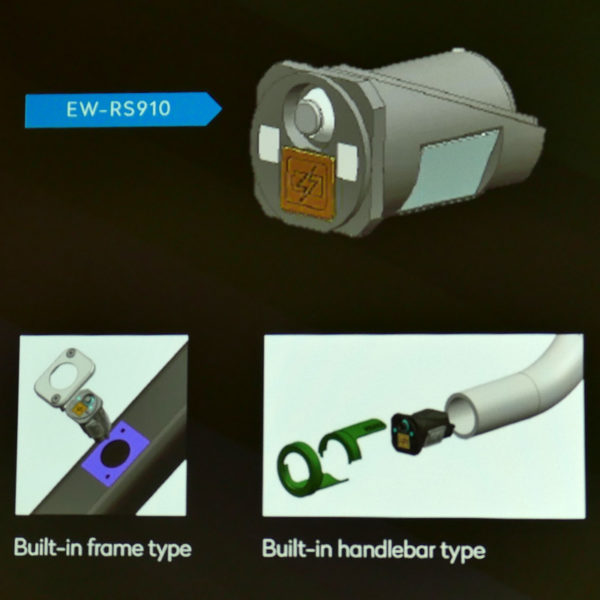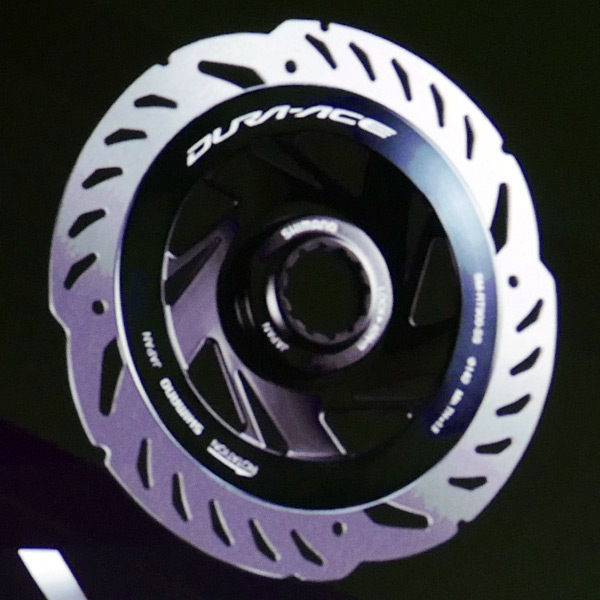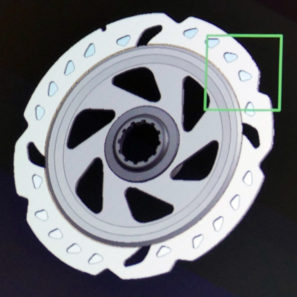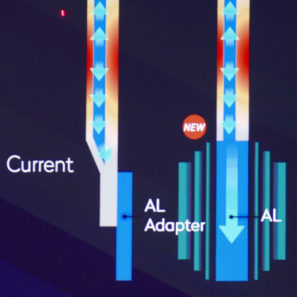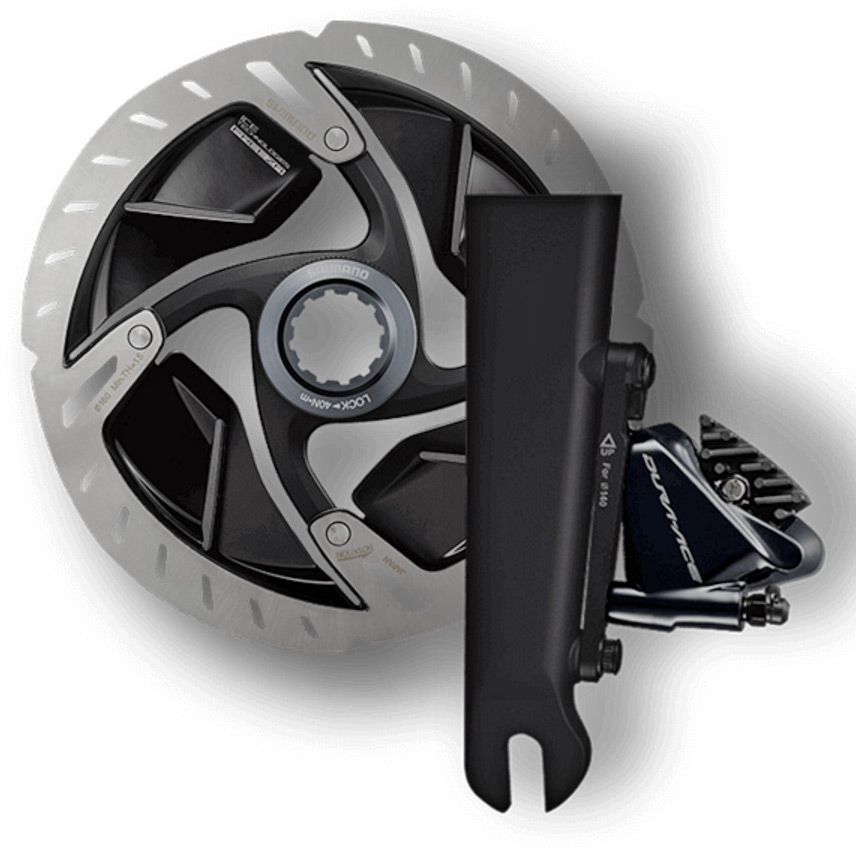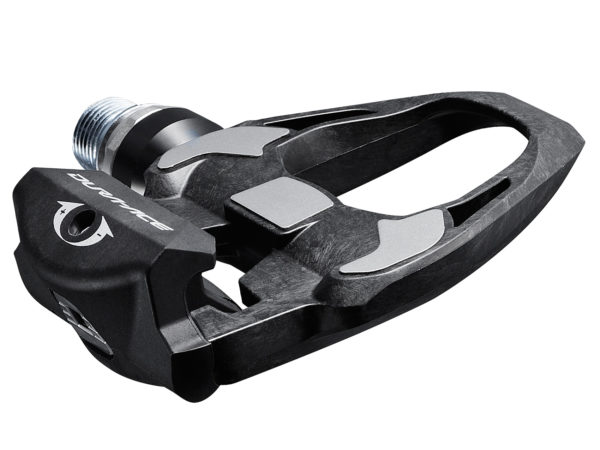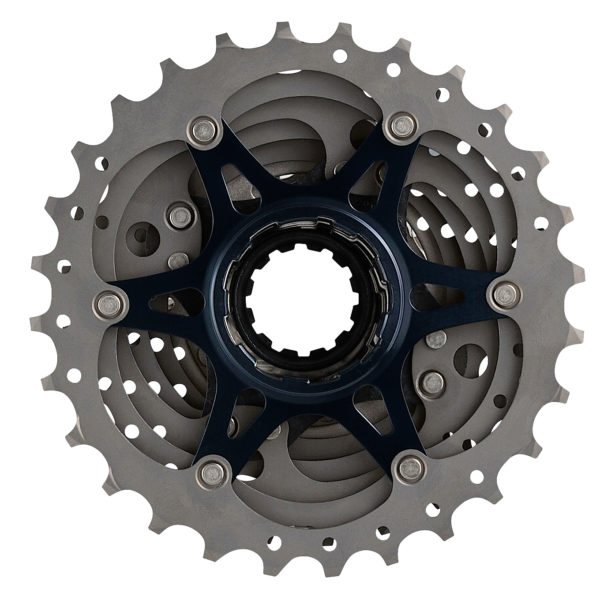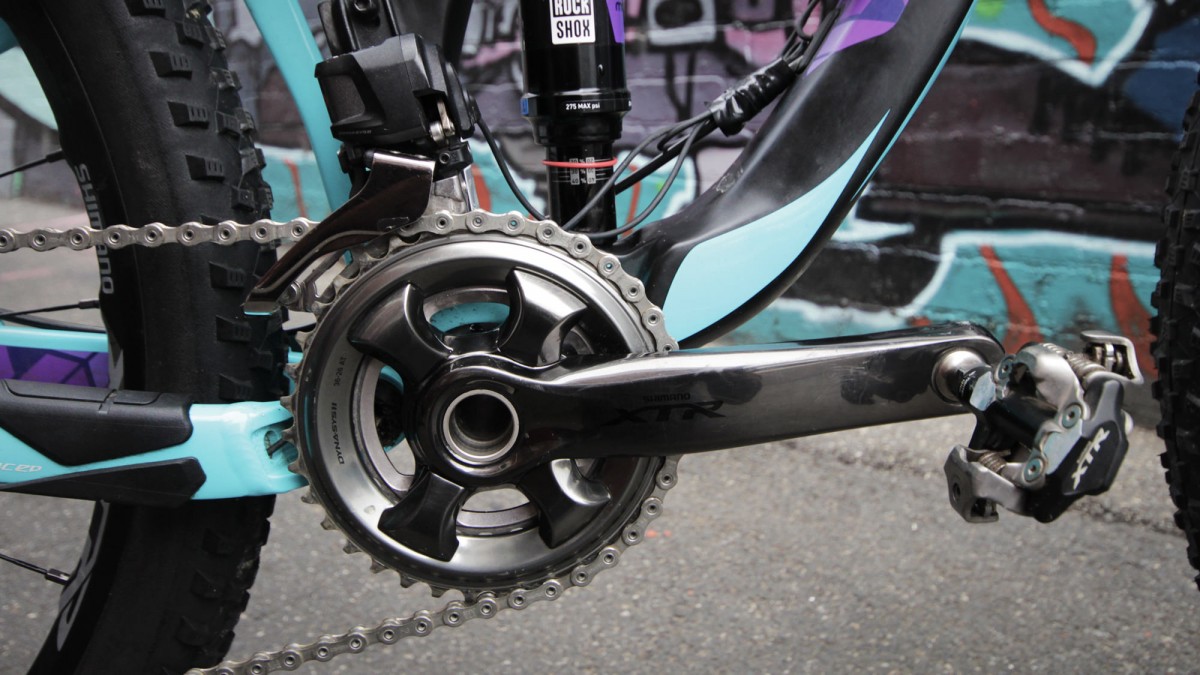A new version of Shimano’s flagship Dura-Ace is finally here after much talk and teasing. Like we had seen before the standard crankset gets the biggest update in terms of looks, but there is improved tech at every step of the line. As Shimano’s reps told us, literally everything is new except the new, reshaped 11-speed chain that was just updated last year.
That is a good place to start. The new Dura-Ace R9100 groupset sticks with 11 speeds in this update. The R designation is one borrowed from their trail groups, but will now brand the road groups going forward for added clarity, most likely as we are seeing more road groups on the all surface riding machines. Shimano introduced us to 11 speed on the road, and seems to be satisfied with the gearing combinations that it makes possible. The rumors of a power meter were indeed true, so we’ll get a glimpse of that below. Plus a look at both mechanical and Di2 electronic shifting setups, and both rim braking and hydraulic disc braking, and even more after the break…
We got a detailed first look at the new M9100 in its mechanical/mechanical guise. While Shimano sees electronic shifting as the ultimate way forward, they still understand the demand for the tactile feedback and lightweight groups that some pros and amateurs prefer. And there is a lot of tech in the ‘classic mechanical’ group, with pretty much everything getting shaken up in Shimano’s System engineering concept where the group is designed to function as a whole, better than the sum of its parts. The new Dura-Ace R9100 takes that a step further with what they are calling System Supremacy.
Di2 R9100 is probably the pinnacle of that integration with all new disc brake and rotor designs, new derailleur geometries, and new options for TT controls and synchronized shifting.
The new Hollowtech II crankset is all about improving the balance of weight and efficiency. Stress analysis of the current 9000 cranks showed stress risers above where the spider and crank arm come together, so the new crank gets stretched there to delivered decreased weight and better overall strength. Shimano keeps with the same 4-bolt spacing that gives chainring sizing flexibility, but does alter the distance between chainrings. They are now a bit wider spaced for better alignment with 135mm hubs, shorter chainstays, and no drag. The cranks will be available in 165-180mm lengths and 50/34, 52/36, 53/39, 54/42 & 55/42 ring sets. (No word yet on cyclocross ring sets, but we’re told that the current 4-bolt CX rings will work.)
The wider crank shape was not the direct result of adding the power meter option, as the power sensors are incorporated more into each crank arm away from the spider. The Bluetooth & ANT+ power meter version of the crank looks almost identical as the standard crank with the addition of a small communication box a la Pioneer. It is not apparently a cooperative effort though. Shimano was very concerned with day-to-day reliability when putting the D-A name on a power meter, so the system is totally sealed to keep water out. An internal rechargeable battery gets power from a magnetic power connector like in Mac’s magsafe, so you don’t have to open anything.
Update: Check out the power meter cranks here.
Only one short-ish rear derailleur will be offered for R9100. Shimano calls it a short cage, but the composite cage is clearly a bit longer than what had been called short in the past, and looks like something borrowed from XTR. The rear derailleur will spin around a new selection of Dura-Ace cassettes, including a new wide range 11-30 option.
Also from the trail comes a Shadow mounting system to give the derailleur a lower profile and the ability to work with direct mount hangers like we often see on thru-axle bikes. The pulleys also get redesigned, with a toothy upper pulley for improved chain retention.
The Dura-Ace shifters get redesigned to have a bit easier to use ergonomics. That also means new hoods that are easier to take off and reinstall. The shape stays mostly the same, if trimmed down a little bit.
The mechanical internals get a big overhaul with faster shifts and a shorter stroke to drop gears. We got a rare chance to sneak away with the demo bike, and the shifting does indeed feel noticeably easier with shorter lever movement. Although in a short spin it wasn’t really discernable if the shifting was any faster over already-quick 9000.
For those who like the 9000 series, it is welcome news that the new Dura-Ace feels essentially the same in hand, albeit with a nice new checkerboard pattern that might make for better grip in the wet.
The mechanical front derailleur also gets a big reshaping overhaul, with the promise of even lighter shifting and easier cable routing. The recent trend of long lever arm derailleur seems to be over with this new twist activating mechanism. The new R9100 uses a new design that attached the cable directly and does not require a section of housing at its stop, and has built-in hex-key adjustment so no more barrel adjusters are required. I personally will be happy to see this trickle down to the other groups over the coming years for the betterment of any cyclocrossers out there riding 2x setups.
Th R9100 front derailleur comes in 1 braze-on variety only, with a separate band clamp for frames that require it.
Dura-Ace’s dual pivot brakes get an update with a stiffer design, and a more predictable linear braking curve. They also get improved tire clearance up to 28mm tires. Improved stiffness comes from a new internal brake booster like we saw on brakes in the 90s. Shimano claims a 43% reduction of flex in the brake over the already benchmark 9000 calipers.
New direct mount R9100 calipers are also coming, also with improved tire clearance.
Shifting over to Di2, Shimano worked hard to bring the ergonomics more in line with mechanical setups. The idea was to trim the lever bodies, so that all four possible shift/brake combinations (mech/mech, mech/hydro, Di2/mech & Di2/hydro) were essentially the same size so that their pro riders could jump back and forth during competitions throughout the race season. That’s welcome for any (wealthy) amateur schlubs, too, who might use Di2 on the road and mechanical for cross.
Di2 also gets big TT updates. New Di2 TT brake levers go from 2 buttons to one for a slimmed down profile. TT extension end shifters also drop to just one button and are now activated from the tips of the bars for less finger movement to shift. To make those work you need to use Shimano’s Synchro Shifting which was introduced recently along with Di2 offroad. There you just shift the rear derailleur – one button up, one button down – and the front automatically shifts to keep gearing optimal.
But now Di2 is adding a second synchro option called Semi Synchro Shift. This time you keep shifting your rear derailleur only like normal, but when you shift the front mech, the rear drops or climbs the cassette automatically too, so you get a smoother cadence transition. Most Di2 users already probably do this by tapping both buttons at the same time (like I do), but with Shimano timing it, the shifts should be ever faster and more precise.
In the new R9100 group is another small nugget that will be great for all Di2 users. I have personally thought it was a bit silly to have the Junction A box hanging from a rubber band on such an expensive, high-end group. With R9100 comes a new integrated junction A box that can slip into a bar end clip, or integrated into frames by some manufacturers. It has the same charging port with a little plug that will be accessible but not dangling from your stem. (Send me one now.)
Yeah, finally. Dura-Ace disc brakes. While the flat-mount-only disc calipers look mostly unchanged, the rotors get a completely new look that improves upon the cooling of both Ice-Tech and Freeza rotors that we’ve seen off-road. The current stainless steel and aluminum sandwich meant the contact with the alloy spider was a point where heat could not so easily transfer. The new Dura-Ace rotors, however, use a alloy carrier that actually becomes the inner sandwich layer under the braking surface. The result is a very different, more closed look, without the raised cooling scoops of Freeza, but still an improved cooling performance of about 30°C at the ~400° max that Shimano’s rotors see under extreme braking. For now they look to only be coming in Centerlock.
Dura-Ace pedals get a refresh too. That means they get improved rigidity and lower weight with their wide injection molded carbon body. They now get hollow cleat bolts and a bit more open layout.
Not to be ignored are the new cassette offerings. While not too different, the cassettes keep weight down with the 5 bigger titanium cogs on a carbon fiber reinforced plastic and aluminum spider. Cassettes will be available in tight cluster 11-25 & 12-25, or in wider range 11-28, 12-28, and the new 11-30.
Several new carbon 28mm wide wheel options are also coming with R9100, in 40mm and 60mm depths for both disc and rim brakes, plus a 24mm version for rim brakes. We’ll take a closer look at those in the coming weeks.
Update: Check out the new wheels here.
No word on pricing on the new M9100 Dura-Ace. The mechanical version (and maybe the Di2/rim brake) is expected to be available this fall to consumers, soon after tradeshow time, while the Di2 and hydraulic disc brake versions are expected at the start of 2017.
Update: Check out pricing here.
